Paddle Plant Propagation: How To Prune & Take Cuttings
When I moved from Santa Barbara to Tucson, I left my beloved garden and all those fleshy succulents behind. The ones planted in the garden stayed, and those in pots were given away to friends and neighbors. A tear or 10 were shed but I did take cuttings of many of those plants to ease my pain and satisfy my horticultural itch. This is all about Paddle Plant propagation and how to prune and take cuttings of this fascinating succulent.
Note: The Paddle Plant is also known as flapjack kalanchoe.
The Paddle Plants were part of this mixture of succulent cuttings and plants which was planted about a year and a half ago. My, how they’ve grown and spread! In the video, I said they had come from 2 or 3 cuttings but it looks like there’s only 1 Paddle Plant cutting when you click on the link.
Paddle Plant Propagation – How To Prune & Take Cuttings:
BTW: in the video, I call this plant Kalanchoe thrysifolia but it’s actually Kalanchoe luciae, or so I’ve been told. Thyrisifolia and luciae seem to get used interchangeably. Closely related are K. fantastica and K. tetraphylla.
Paddle Plants, also called Flapjacks Plant or just Flapjacks, are part of the genus Kalanchoe. It’s characteristic for most plants in this classification to get leggy and for the stems to elongate as they grow. You can see what happened to my Paddle Plant patch in Santa Barbara – the whole thing had to be cut back, propagated and the replanted.
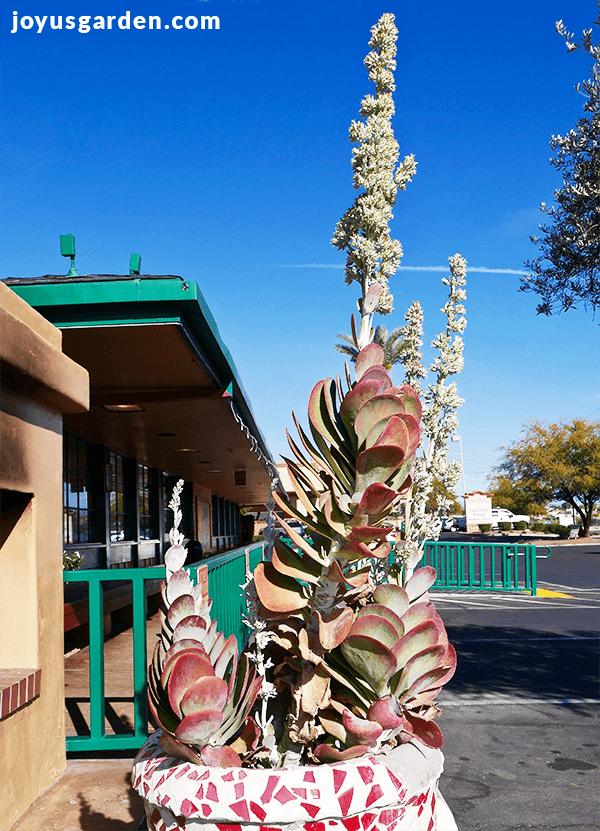
This was taken in a restaurant parking lot here in Tucson. You can get an idea of how this plant elongates as it’s getting ready to bloom & when in full flower.
How to propagate the paddle plant:
Paddle Plants, like most succulents that I know of, are so easy to propagate. You can use a knife or your pruners (I used both as you’ll see in the video) to cut those big ole stems. The knife can in handy for pruning in a tight spot where it would’ve been hard to fully open the pruners. I cut the stems as far back to the soil line as I could which exposed more babies at the base.
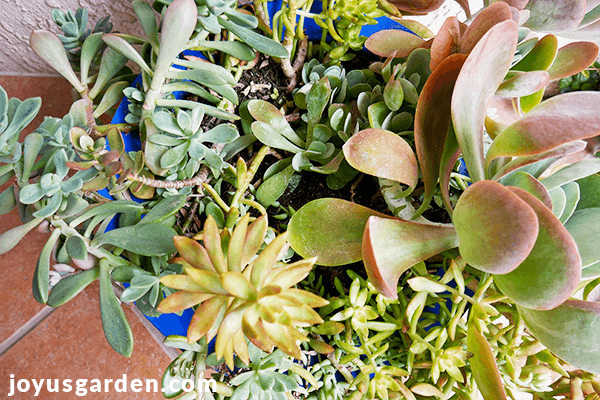
Paddle Plants have lots of babies (pups) which form up & down the stem as well as at the base. Sometimes the mother plant will die after flowering but those babies live on. I’m going to thin some of these pups out as they grow.
2 important things to know before starting any kind of a pruning job:
Make sure the plant isn’t stressed (ie: dry) and that your pruners or cutting tools are clean and sharp. You want to make nice, precise cuts so the health of the plant isn’t compromised.
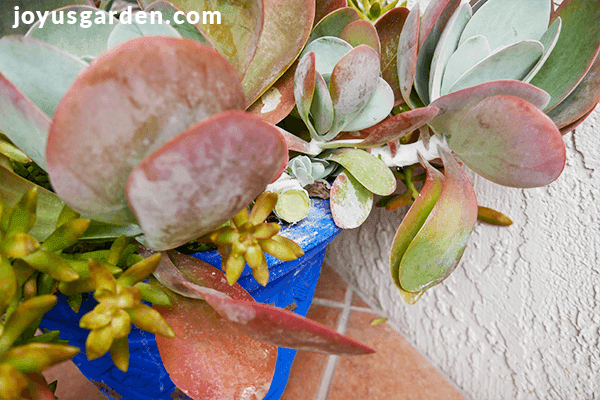
Wondering what that white powdery substance is on the blue pot? It’s not powdery mildew or residue from whiteflies or mealybugs. It’s not anything you’re doing wrong; this succulent is supposed to have it. This white protective coating covers the stems & knocks off when you’re pruning. My hands, tripod, camera, the pot & patio were covered with it!
Paddle Plants make a fine houseplant if you have enough light but I’ve never heard of 1 flowering indoors. The time for most succulents to flower in winter and spring and these are no different.
A couple of people I know cut the flower stalks off before they fully develop. They say it keeps the plant more compact and looking better. On the other hand, if you cut them off, you don’t get as many babies.
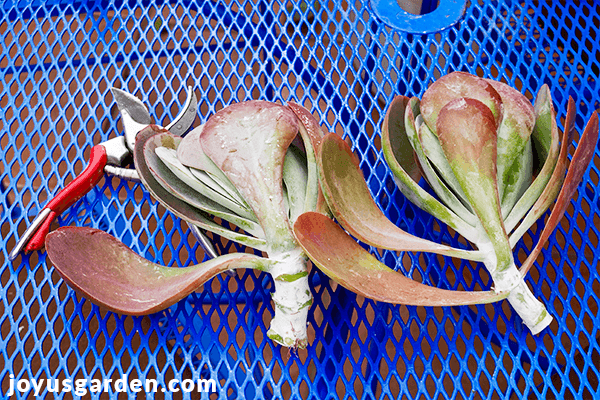
Here are the cuttings after I cleaned them up. The 1 on the left already has small roots coming out at the base. I’m going to let them heal over (forming a scab so those big fleshy stems don’t mush out when planted) in my laundry room for 2 or 3 weeks & then I’ll be back to show you how to plant them.
This post and video show you how I planted these Paddle Plant cuttings.
I wanted to do this post to let you know that Paddle Plants get rangy and it’s nothing you’ve done. The plant grows this way and needs to be cut back. That’s means you get cuttings and more plants – not a bad thing at all!
Happy gardening,

YOU MAY ALSO ENJOY:
How To Plant Paddle Plant Cuttings
How Much Sun Do Succulents Need?
How Often Should You Water Succulents?
How to Transplant Succulents into Pots
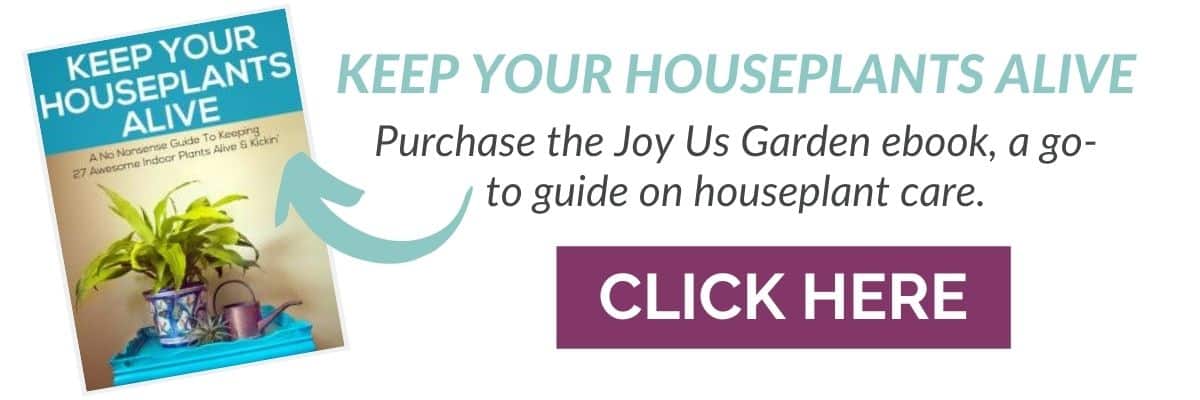
This post may contain affiliate links, you can read our policies here.

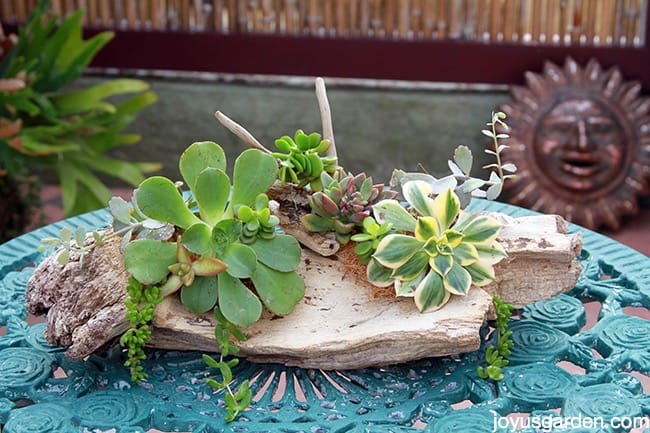
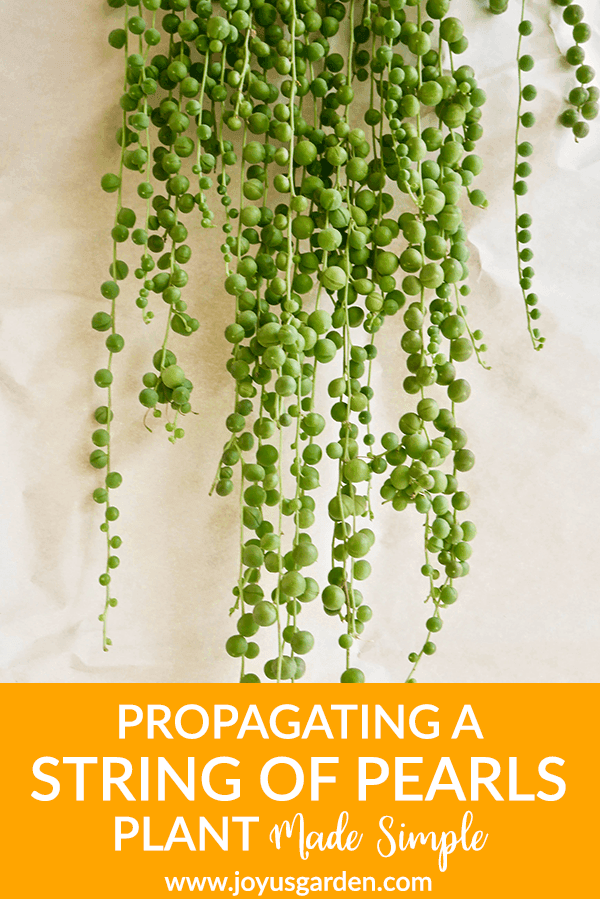
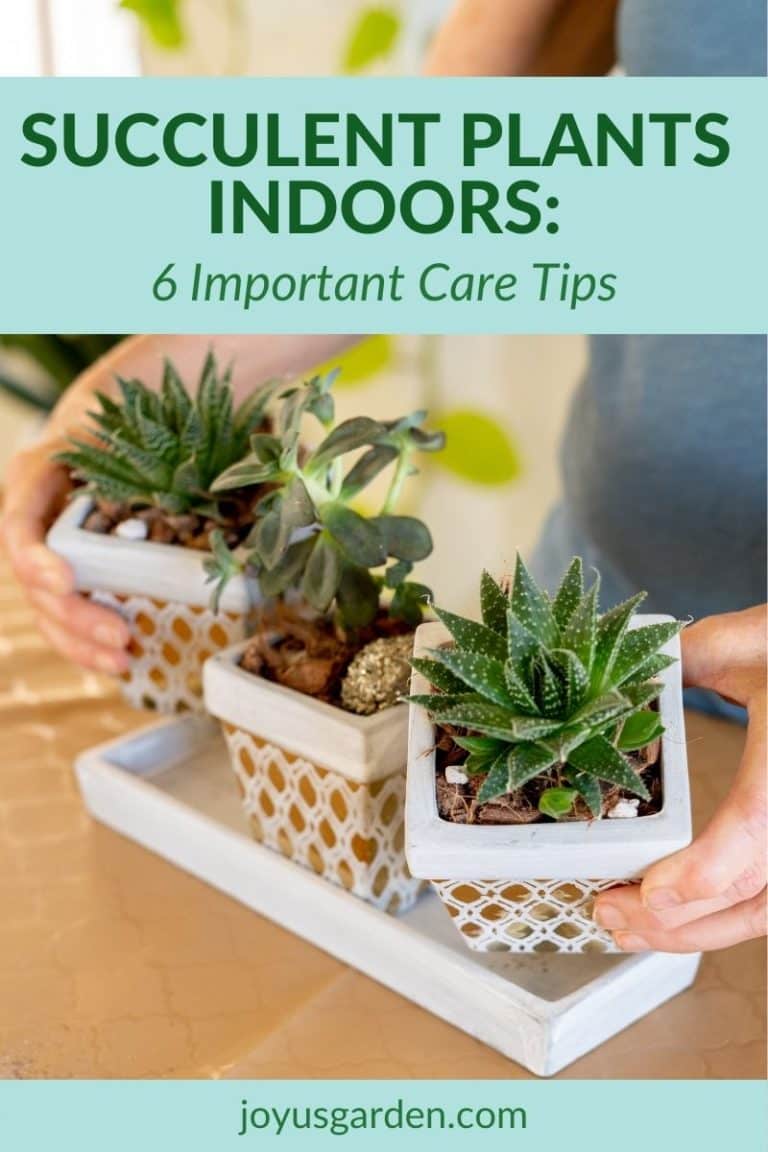
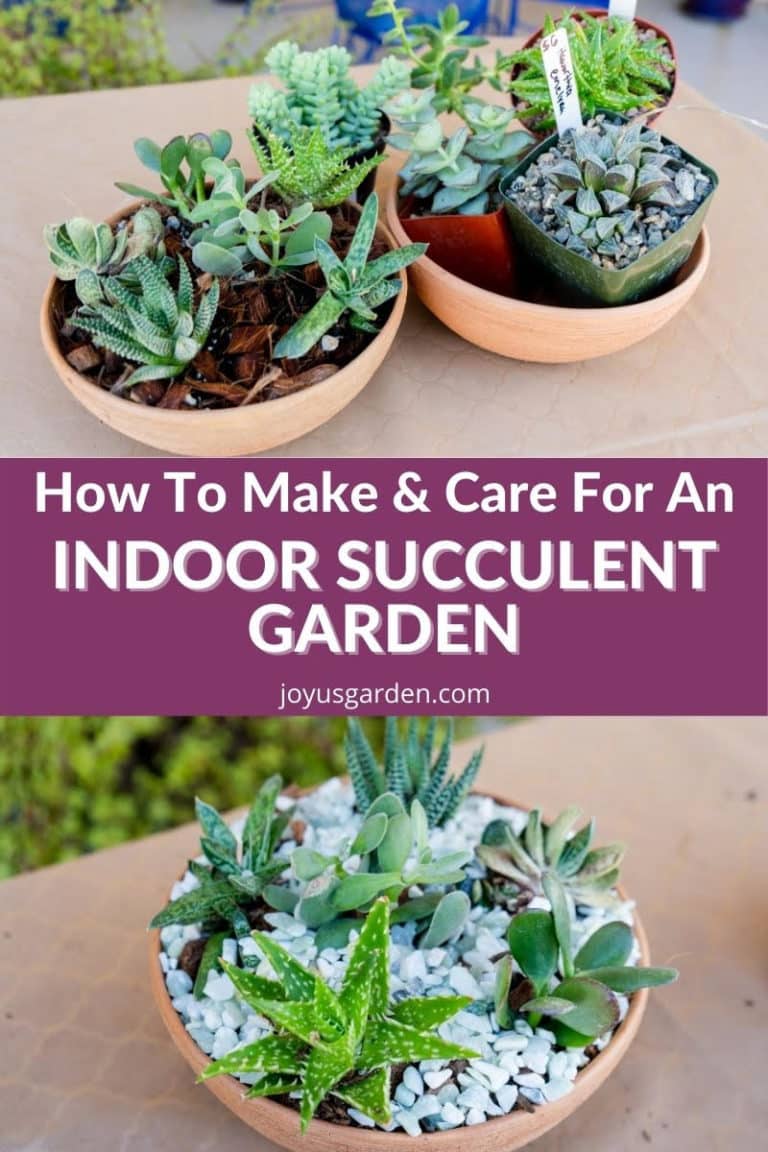
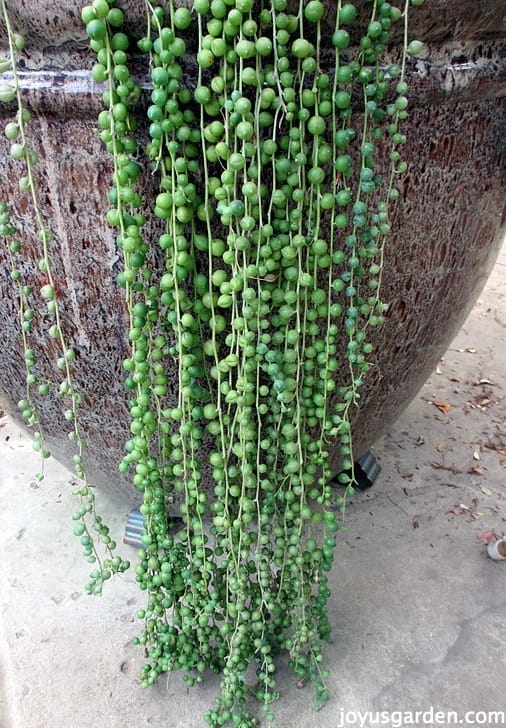
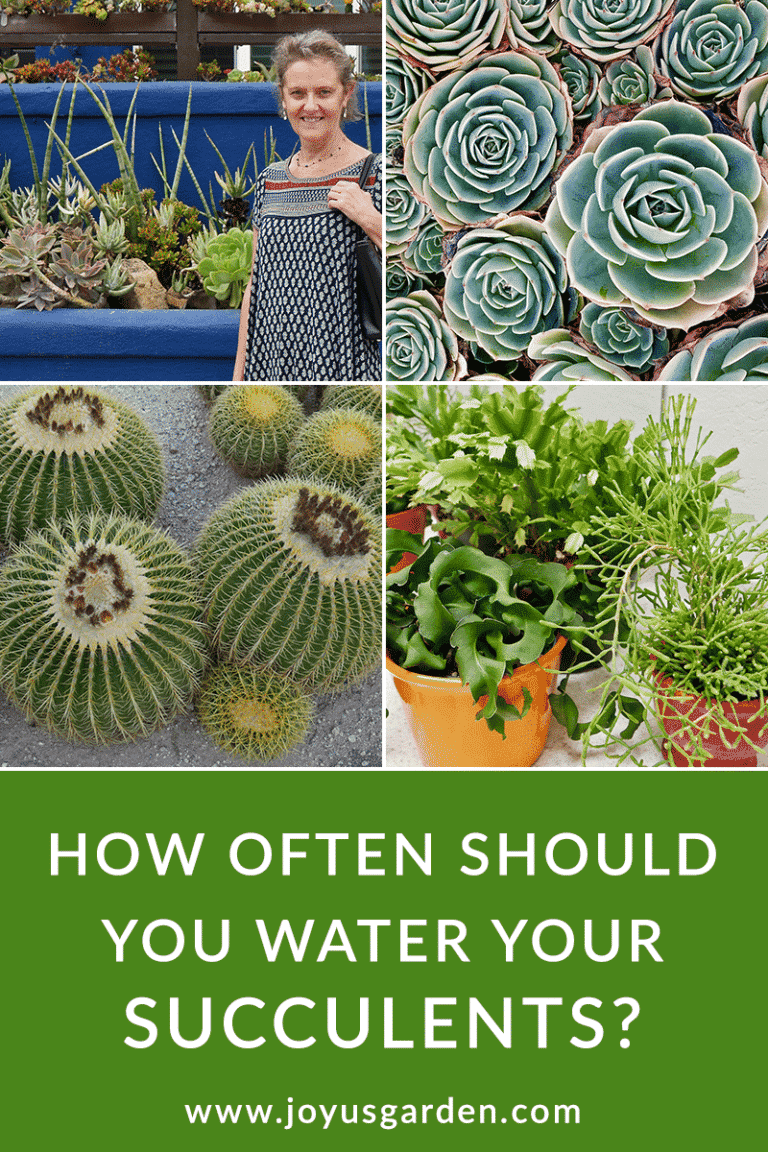

You said you’ve never seen one of these flower indoors. But we have one! I’d post a photo if I could. It lives in front of an east-facing window that gets lots of morning light, and the plant is now about four feet tall with a stalk that is about two feet long with an array of flowers on top. It has lost it’s red coloring around the edges of the leaves, which I do hope will come back (I’ve read that they become more red in the winter. Or that they lose the red coloring when they don’t get enough light). I’m still learning how to care for it, so appreciate all the tips you have on your blog!
Lisa – Thank you for writing & sharing that! Other readers will be encouraged because they love it when plants flower. My Paddle Plants growing outdoors here in Tucson have lots of red coloring in the winter but loose it once the temps heat up. It’s mid-May & they’re almost completely all green now. I’m glad you’re finding the blog to be helpful! Nell
Thanks very much for your help and wealth of information.I bought a paddle plant 2 weeks ago the tips were already red is this healthy or not, I would like to take it back if it’s not healthy before it’s too late, I spent $25 for it.
Thanks
Hi Pam – These plants are tinged with red as a reaction to cooler temps. It’s normal. Mine has now turned totally green as the temps are over 100F here in Tucson now. Nell
I have one that is 5’ tall with a cluster of flowers at the top. C an I cut the stalk just below below the cluster and plant it?
Hi Donna – When a PP blooms, that mother plant will eventually die. However, lots of babies are produced along the stems & at the base. Nell
Hello!
I wondered what you do with the baby plants? Can you repot them?
You sure can Emily. I’ve done it many times. Here’s a post for you: https://www.joyusgarden.com/paddle-plant-cuttings/ Nell
I was given a trip color pup,, it is all white. They potted it up and I’ve put it under my grow lights, however I am worried that with no green will it survive, and grow. I am guessing that before it was taken off the mother plant that it got it’s nutrients from parent plants chlorophyll. Please tell me if I am worried for no reason
Hi Linda – It should green up once given sufficient natural light so it can produce chlorophyll. Nell
Hi! My flapjack flopped over because it’s so too heavy. I would like to cut the stem and repot it. I read your blog, do I just let the plant set on a tray without soil for 3+ weeks or do I need to let it lay on soil and dampen the soil like o do with other cuttings?
Hi Kate – Air dry is best so that the stems heal over. How long depends on your climate. I’m moved to a very hot climate (Tucson) & let my succulents heal over 1 day to a few weeks. Nell
Where should you leave the plant while it’s healing over?
Hi – I leave them in a bright location in my utility room out of direct sunlight. Nell
Hello! I ordered one of these online and there were issues with shipping that made the package take 3 more days to get to me. As a result, there was some damage done to some of the leaves. I’ve been monitoring it closely to ensure the soil is as it should be and the plant seems to have stabilized, but there are still some leaves that are all crispy on the edges. Should I cut them off, and if so, how can I make sure I don’t damage the plant further?
Hi Alex – Once the leaves are marred in any way, they’ll stay that way or maybe even get worse. I’d leave them on until you get some more growth going on the plant (which may not be until spring or even summer) & then you can remove them if they’ve gotten worse or they bother you. Most times new growth appears towards the base or in the nodes. Nell